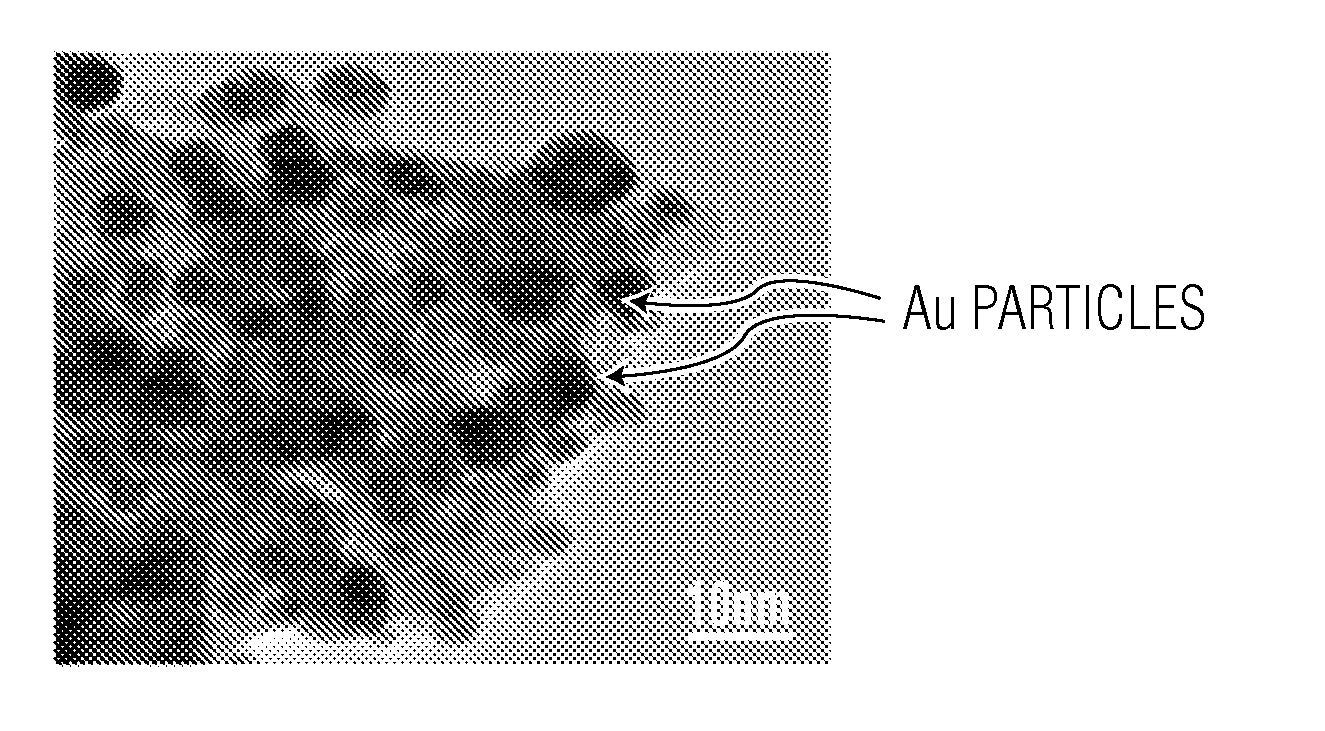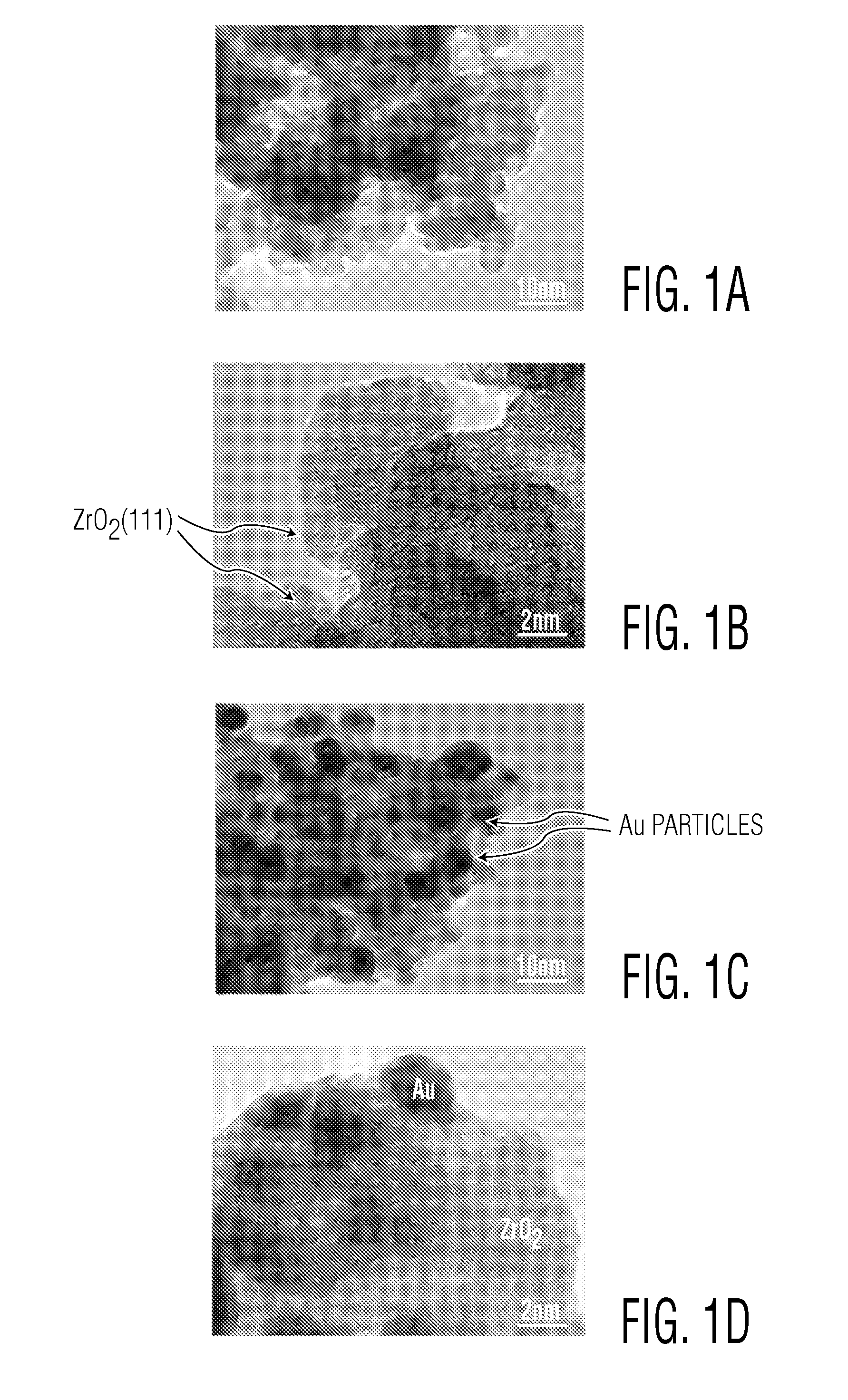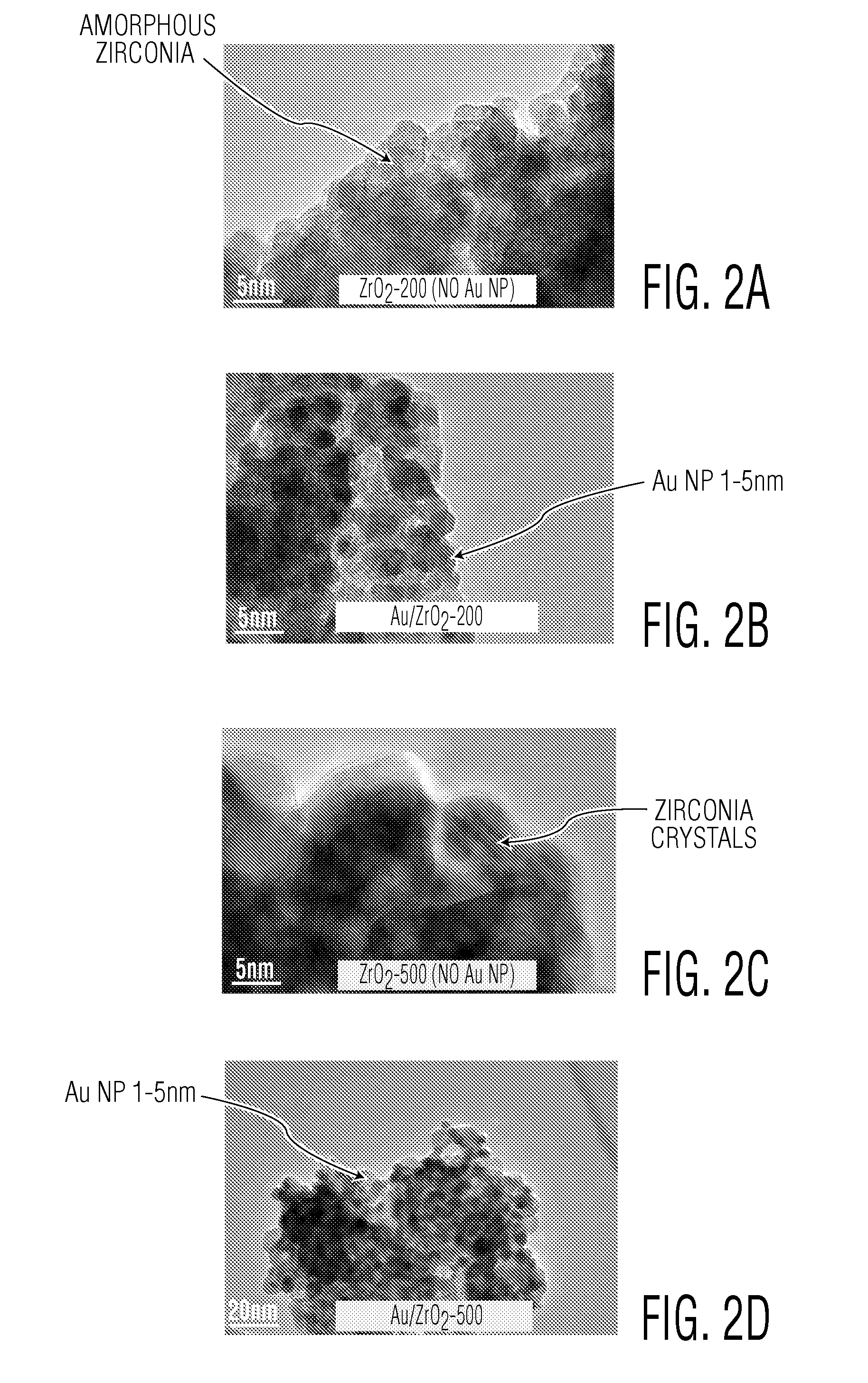Oxidation Catalysts Useful for Ambient Temperature Operation
- Summary
- Abstract
- Description
- Claims
- Application Information
AI Technical Summary
Benefits of technology
Problems solved by technology
Method used
Image
Examples
example 1
Preparation of a Catalytic Sorbent of the Present Invention
[0063]A hydroxylated form of zirconia (designated herein as ZrO2) commercially prepared and available from Magnesium Elektron Inc. of Flemington, N.J. was obtained. The as-received ZrO2 samples contained water in amounts of from about 0.24 to 0.28 gram per gram ZrO2. The ZrO2 sample (designated herein as ZrO2-85) was calcined at a temperature of about 85° C. for about six hours. The ZrO2-85 sample was then loaded with gold nanoparticles via colloidal deposition. The deposition technique used is similar to methods disclosed in Prati et al., Topics in Catalysis, 2009, 52, 288-296, and Comotti et al., Topics in Catalysis, 2007, 44, 275-284, the contents of which are hereby incorporated by reference.
[0064]The deposition involved the preparation of reduced gold nanoparticles from a solution of AuCl3.HCl (7.5 ml, 0.008 M). The solution was diluted to 150 mL with 18 Mohm deionized water. To produce a sample with a particular pH bet...
example 2
Comparative Samples of Catalytic Sorbents of the Present Invention and Titania-Based Catalysts and their Textural Properties
[0066]Samples of catalytic sorbents of the present invention were prepared from a hydroxylated form of zirconia (designated herein as ZrO2). The hydroxylated form of zirconia was obtained commercially prepared and available from Magnesium Elektron Inc. of Flemington, N.J. The as-received ZrO2 contained water in amounts of from about 0.24 to 0.28 gram per gram ZrO2. The samples of ZrO2 were divided into different groups. One group (designated herein as ZrO2-85) was calcined in a static oven at a temperature of about 85° C. for about six hours. A second group (designated herein as ZrO2-200) was calcined in a static oven at a temperature of about 200° C. for about 6 hours. A third group (designated herein as ZrO2-500) was calcined in a static oven at a temperature of about 500° C. for about six hours.
[0067]Three titania substrates or supports, Ti-ana (101), Ti-iso...
example 3
Catalytic Carbon Monoxide Oxidation Test Apparatus
[0071]A study was initiated to report the properties and catalytic activities of a hydroxylated polymorphic zirconia comprising a mixture of Zr(OH)4.nH2O and crystalline ZrO2.nH2O, supporting gold nanoparticles, and various titania supports, using a test apparatus 30 shown in FIG. 3.
[0072]As shown in FIG. 3, the test apparatus 30 was used for measuring the activity of catalyst materials by means of exposing a sample catalyst to a known concentration of chemical adsorbate. The test apparatus 30 consists of a closed-circuit construction through which a gas mixture is circulated through a bed of sample catalyst at fixed airflow velocities. The test apparatus includes a syringe 32 containing a chemical adsorbate (i.e., carbon monoxide), a chemical injection port 34 for receiving the chemical adsorbate from the syringe 32, and a stream selection valve 36 for directing the gas mixture through either a sample bypass loop 38 or a sample test...
PUM
| Property | Measurement | Unit |
|---|---|---|
| Pore size | aaaaa | aaaaa |
| Pore size | aaaaa | aaaaa |
| Percent by mass | aaaaa | aaaaa |
Abstract
Description
Claims
Application Information
 Login to View More
Login to View More - R&D
- Intellectual Property
- Life Sciences
- Materials
- Tech Scout
- Unparalleled Data Quality
- Higher Quality Content
- 60% Fewer Hallucinations
Browse by: Latest US Patents, China's latest patents, Technical Efficacy Thesaurus, Application Domain, Technology Topic, Popular Technical Reports.
© 2025 PatSnap. All rights reserved.Legal|Privacy policy|Modern Slavery Act Transparency Statement|Sitemap|About US| Contact US: help@patsnap.com



